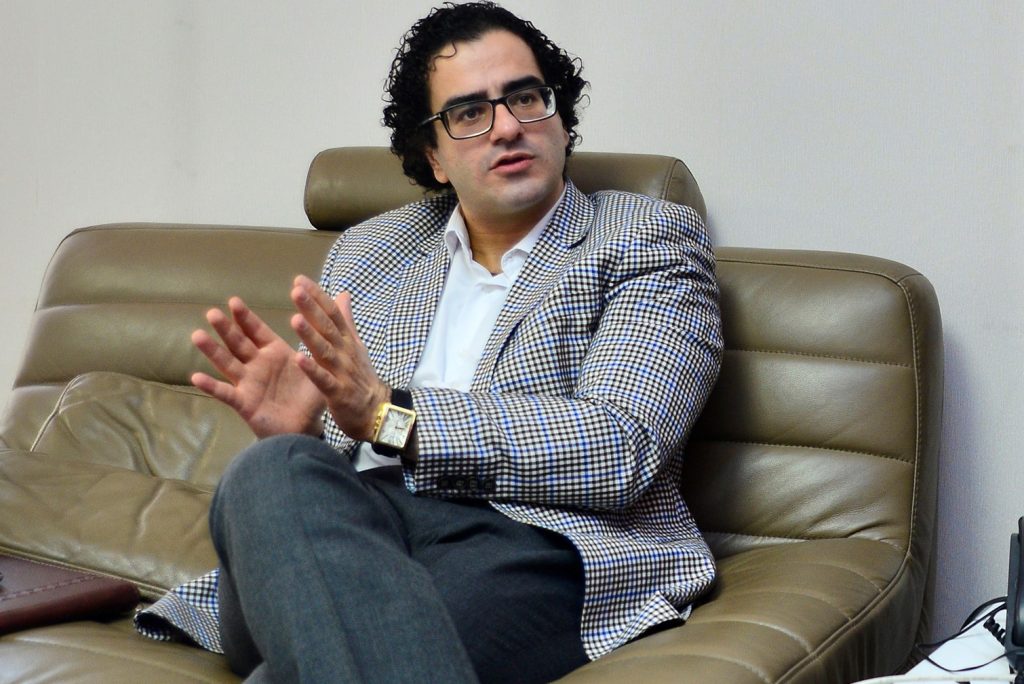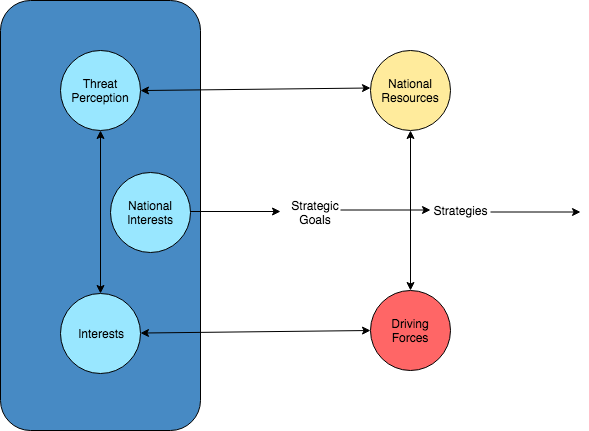
On Tuesday 9 April the Middle East Directions Programme hosted Dr. Abdolrasool Divsallar, a Senior Research Fellow at the Center for Middle East Strategic Studies (CMESS) in Tehran, Iran, who presented on the main elements informing the Islamic Republic’s strategic thoughts by introducing a model called ‘Iran’s Cognitive Context of Strategic Thinking’. He then applied the model to simulate the ways in which Iran may respond to US maximum pressure policy. The lecture was insightful for Middle East experts who seek to better understand how Iranian leaders’ make their strategic decisions.
The following MEMO is a brief synopsis of the conceptual model presented in this speech.
Memo
Iran’s regional security policy has been controversial in shaping the Middle Eastern order and has spurred debates regarding its consequences. While Iran claims that its interventions are legitimate and constructive for regional stability and the fight against terrorism, the US, the EU, and other regional powers perceive it in a different way. They see Iran’s security policy as among the main causes of the regional instability that endangers the international order. The wide gap that exists between these views is caused by competing interests, differences in world views, values, and strategic goals; yet it is also due to the complexity involved in knowing each other’s security policy and concerns. In particular, understanding the Iranian perspective on security policy and on the timely follow-up of its changes is even more challenging. Multiple centres of powers, the dominance of historical and cultural issues in security policy-making, a lack of officially released security policies, the asymmetrical nature of Iranian policies and the difficulties in conducting field research have made understanding Iran’s security policy a tough task for international observers. However, the Islamic Republic has gradually transformed into a rational player seeking pragmatic policies. Thus, security policies are developed based on rational strategic calculus pursuing realpolitik goals rather than ideological merit. This factor enables researchers to model Iran’s strategic thinking and understand the constraints it faces through rational decision-making. In this sense, I try to give my understanding of Iran’s strategic thinking context. The views given here are based on my field-oriented experience due to constant presence in Iranian strategic studies institutes during 2005-2018.
Often, less attention is given to the origins of the strategic thinking which gives birth to Iranian policies. Analysts are more interested in exploring actual Iranian policies in the Middle East without necessarily going deep beneath the surface, as the complexities mentioned before make such deeper analysis difficult. Nonetheless, actual policies, like supporting non-state actors or expanding military power in the Levant, are just the end-products of the strategic thinking process. However, there is a particular cognitive basis in which strategic thinking in Iran takes place. I would like to use the phrase cognitive context of strategic thinking to refer to this. Actually, little knowledge exists on how the cognitive context of strategic thinking performs and even it is comprised of what. In other words, we need to know how the Iranian leadership process strategic environment functions, what the essential elements that form the leadership understanding are, and in general how strategies are conceived inside Iran. Recent research on the strategic culture of the Islamic Republic has limitations in terms of the quantity, scope, biased approaches and methodologies that have been used. Other researches dealing with the decision-making process are more focused on the institutional-structural aspects of foreign policy decision making. Therefore, they only explain which institutions are involved in foreign policy and what role these institutions play. The lack of proper attention paid to these aspects is critically dangerous. Since it leads to further misperception of security policies and contribute to the deepening of the security dilemma which Middle Eastern leaders are now trapped in, rather than contributing to resolutions of conflicts in the region.
In particular, we need to know how Iranian leaders judge their strategic environment and based on which elements do they process the information received from the security environment. Thus, the elements that shape the core of the strategic thinking in Iran and the other elements that constrain rational thinking leading to procedural rationality need to be studied carefully. My research aims to fill this gap by providing a conceptual model that explains the elements forming the cognitive context of strategic thinking in Iran, as well as the way interactions and synthesis between these elements take place. It is also important to show how emotions like fear or extreme nationalism interfere in the rational process and constrain rationality. In brief, there are four sets of questions that need to be answered:
1. How does the Islamic Republic formulate its regional security policies?
2. What are the main elements forming the cognitive context of strategic thinking in Iran?
3. How do these elements interact and what causal relations do they create among each other?
4. What emotions and feelings limit Iranian leaders’ capacity to rationally analyze the strategic environment and choose policy options?
Initial findings show that four elements – which are threat perceptions, elite interests, changes in national resources, and driving forces (inputs from social-historical-ideological and institutional lessons) – construct the cognitive context of strategic thinking in Iran. The synthetic interaction among these elements and the reasoning based on them shapes the way Iranian decision-makers judge the strategic environment, order their preferences and make foreign or security policy decisions. Indeed, the strategic thinking in Iran and the security policies arising from it are the products of cognition derived from these elements. These elements enjoy bilateral and multilateral interactions among each other. Revealing the causal relations between them is difficult. However, their shared interactions form a cognitive basis that is the context of Iran’s strategic thinking.

As is shown in the schematic view, the definitions of the three key issues of national interest, strategic goals and operational strategies, are based on the synthetic interaction of the above mentioned elements. I believe that the two elements of threat perception and elite interests are the key factors in defining Iran’s national interests. This is the opposite of the views that introduce hegemonic or ideological ambitions as the main elements in forming Iran’s national interests. Indeed, defining national interest as “safeguarding the revolution” is rooted in the state’s feeling of insecurity and the elite’s interest in seeing the continuation of the revolution as essential to satisfying their interests and religious responsibilities. It is the consensus among Iranian leaders that the Revolution has been under perpetual threat since 1979. They argue that the Iranian revolution has historically survived evolving threats and has constantly suffered from a mix of external and internal threats, hence the vital task is to reduce the strategic risks and limits which are endangering the existence of the revolution. Thus, little space remains for ideological causes or public opinion at the national interest level. It is not an exaggeration to say that the threat perception is the most single powerful element among other elements in forming the cognitive context. It could explain wide range of Iran’s security policy. My recent piece on the Pillars of Iran and Russia security ties provides an example of this.
Strategic goals and operational strategies are also heavily influenced by threat perceptions and elite interests; however, they are not the linear outcomes of these two elements. Changes in national resources –accessible resources controlled by the state- and inputs form driving forces that are critical in the final make up of strategic goals and operational strategies. In other words, the Islamic Republic performs strategic calculus to balance threats with the resources it controls. But when it wants to develop strategies on how to do this balancing, Iran incorporates what I call the driving forces, which are inputs from historical and ideological lessons or institutional findings. Therefore, Iran’s strategic thinking originates in multilateral synthetic interactions among threat perceptions, elite interests, changes in national resources, and inputs from driving forces. Synthetic interactions happen among various players, from think tanks to political groups and high-ranking bodies. Finally, decisions are made by related authorities as the final stage of a common intuitive task.
The cognitive context of strategic thinking is a shared cognitive space built upon the particular elements that Iran’s strategic thinking had its origins in. Knowing the trends in Iranian regional security policy without taking into consideration these elements and their multilateral effects could be misleading.



